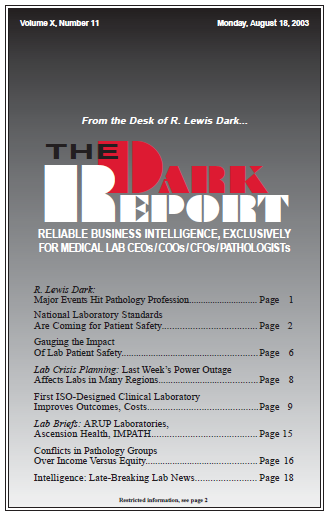CEO SUMMARY: Because lab test data plays such an important role in medical decision-making, the Centers for Disease Control and Prevention (CDC) has launched a national effort to evaluate the quality of clinical and public health laboratories. In forming a Quality Institute, the goal is to issue a National Report on the Quality of Laboratory …
National Lab Standards Coming For Patient Safety Read More »
To access this post, you must purchase The Dark Report.


